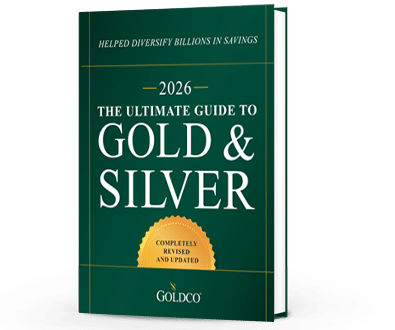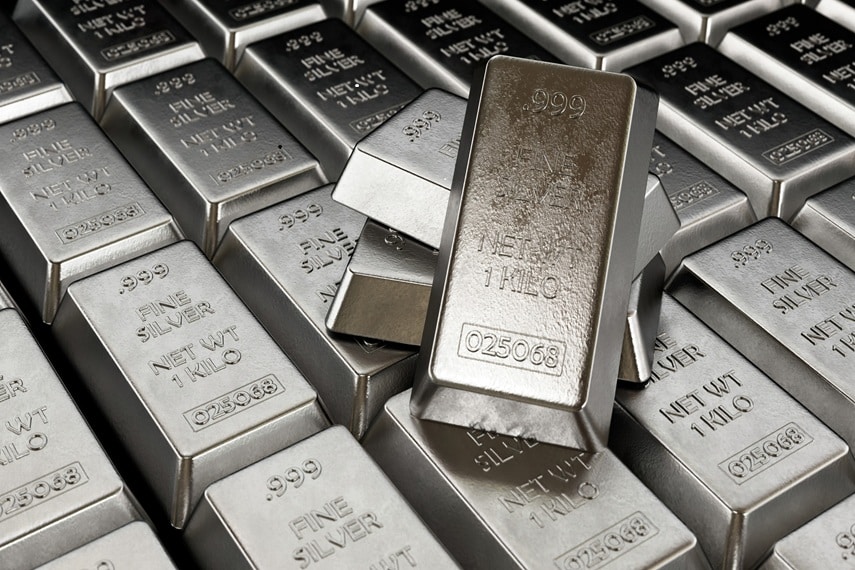
After a historic, torrid run that took gold north of $4,000 per ounce, the recent retracement was not only likely: it’s healthy. Large, trend-defining moves rarely travel in straight lines, and in markets, gravity still works. Parabolic advances need time and price for the market to “digest:” for market participants to reset their positioning around, test conviction for, and clear froth. Recent weakness fits that script and, if anything, reinforces gold’s role as long-term financial insurance rather than a trade that ticks up every day. Prices hovering around the $4,000 area following a pullback of roughly 10 to 12 percent from intraday highs, precisely the kind of correction one expects after a steep ascent.
The cool down is a result of market mechanics and psychology. When a market sprints, momentum traders and systematic funds pile in; when the sprint slows, the same players dial back their risk. Profit-taking begets more profit-taking, and dealers in options and futures may hedge in ways that can amplify short-term swings. The dollar, which strengthened into early November, briefly undercut gold’s tailwinds by making the metal pricier for non-US buyers. That, too, is a standard headwind during corrections. As those pressures ease, liquidity returns and bids reappear. Corrections may be viewed as the “price” of keeping the longer trend intact. On cue, gold’s safe-haven bid re-emerged as US political uncertainty and tariff headlines rattled broader risk sentiment, a reminder that the macro story didn’t suddenly vanish when gold’s uptick paused.
Under the surface, the fundamentals that propelled the rally remain largely in place. Central banks continue to be sizable, steady buyers—an underappreciated demand base that can offset softer jewelry consumption when prices are elevated. The World Gold Council’s recent tallies show ongoing net additions to official reserves through late summer, consistent with the multi-year trend of reserve diversification away from the dollar. That pattern matters: official sector purchases are patient and programmatic, and they dull the cyclical edges of investor flows.
Internationally, the reasons to hold a monetary hedge haven’t faded. Geopolitical tensions, periodic trade skirmishes, and a patchwork of capital controls and sanctions have nudged many institutions to hold a little less sovereign paper and a little more neutral, bearer collateral. Even when acute headlines quiet down, the structural forces—fragmentation of supply chains, sporadic tariff regimes, and the risk of policy surprise—keep a floor under safe-asset demand. Analysts who follow the market closely frame the recent pullback as consolidation within an intact uptrend, not a thesis break.
Domestically, the policy backdrop remains supportive of gold’s long-horizon appeal. The United States continues to run large fiscal deficits; the resulting supply of Treasury debt must be absorbed at a time when major marginal buyers—foreign official accounts and, increasingly, the Federal Reserve itself—are reassessing how quickly they want their balance sheets to shrink. The Fed has already signaled it will end balance-sheet runoff (quantitative tightening) and transition to maintaining “ample” reserves, a shift that typically implies, over time, balance-sheet stability or even expansion as the economy grows. In plain English: the era of the balance sheet pulling liquidity out of the system is winding down, and a more accommodative stance on reserves is on deck. The resulting expansion of the money supply won’t force gold up tomorrow morning, but it does change the medium-term gravity acting on nominal assets and the dollar.
None of this says gold can’t go lower in the near term. It can. If the trend of inflation surprises with increasingly cooler readings, or should the dollar stage another rally, gold prices could probe deeper support levels. But that volatility is the entire point: insurance that never fluctuates is either mispriced or imaginary. The right way to think about gold is not as a bet on next month’s CPI print but as a durable hedge against the intersection of monetary policy, fiscal arithmetic, and geopolitical risk. It is a hedge one hopes not to need, but is relieved to have when the unexpected happens.
Consider the current mix of cyclical and structural drivers. Cyclically, gold responded to the prospect of easier monetary policy stances and to a rolling series of uncertainty shocks. Structurally, several forces are persistent: (1) official-sector diversification, (2) the slow erosion of “risk-free” status for some sovereign debt owing to elevated deficits and debt-service ratios, and (3) a world economy that is more multipolar and more policy-variable than a decade ago. Even if ETF flows ebb and jewelry demand softens when prices are high, the incremental, rule-driven accumulation by central banks and institutions provides some buoyancy on dips. That is exactly why a swift retracement after fresh highs tends not to be a crisis signal; it is a stress test that, so far, the underlying demand for gold has repeatedly passed.
It also helps to zoom out. In inflation-adjusted terms, today’s prices reflect an environment of rising geopolitical stresses and ongoing monetary accommodation. This is not an outlandish bubble detached from macroeconomic logic. The mid-2020s, post-pandemic period have featured a unique combination of tariff uncertainty, intermittent shutdown risk (and more recently, an actual shutdown), and uneven global growth that leaves monetary authorities balancing disinflation goals and financial-stability concerns. Those cross-currents create “two-way risk” in most assets; for gold, they create a resilient floor. The latest tape action, which features consolidation near round numbers, sharp intraday ranges, and plenty of argument on both sides, is what durable tops and durable bases both look like in real time. The distinction usually becomes clear only with hindsight.
So what about the “this time is different” cases? In any powerful bull market, some speculative longs will be wrung out at times. Some hedgers are always happy to sell volatility into that process. Short-term corrections often end when the marginal sellers complete that de-risking. Meanwhile, fundamental buyers—think central banks, institutions rebalancing strategic allocations, or long-term, patient investors—tend to work orders methodically rather than chase the tape. That cadence is a factor in producing the stair-step patterns we see now.
Two final points:
- Policy asymmetry still favors a monetary hedge. If US economic growth wobbles, the path of least resistance for central banks is to ease: more rate cuts, liquidity operations, or, as the Fed has already indicated, stepping away from balance-sheet shrinkage. If inflation re-accelerates or proves obstinate – signs of which we already see in the service components of CPI and PCE – real yields may rise for a spell, but the political economy of $38 trillion of US government debt levels makes prolonged, high real rates difficult to sustain. Gold tends to benefit from either route over a long horizon, because both scenarios ultimately depend on confidence in fiat purchasing power.
- International diversification isn’t just for equities. A world in which some countries actively accumulate gold while others toggle tariffs and exchange-rate policies is a world in which a neutral reserve asset retains value as a portfolio stabilizer. Needless to say, that doesn’t obligate anyone to chase price spikes, but it does explain why persistent demand shows up on dips.
In sum, the recent decline is not an omen; it’s better viewed as market housekeeping after an extraordinary run. The macro pillars—ongoing demand, the continued loosening of monetary and financial conditions by the Fed, periodic bursts of geopolitical risk, and unresolved fiscal arithmetic—are completely intact. Prices may chop lower before the next leg, or they may base and resume. It is impossible to know which will occur, but it’s also unnecessary: either path is compatible with gold’s function as a long-term insurance policy. For that reason, the correct emotional response to the latest pullback isn’t alarm; it’s perspective.
 About the author: Peter C. Earle, Ph.D, is the Director of Economics and Economic Freedom and a Senior Research Fellow who joined AIER in 2018. He holds a Ph.D in Economics from l’Universite d’Angers, an MA in Applied Economics from American University, an MBA (Finance), and a BS in Engineering from the United States Military Academy at West Point.
About the author: Peter C. Earle, Ph.D, is the Director of Economics and Economic Freedom and a Senior Research Fellow who joined AIER in 2018. He holds a Ph.D in Economics from l’Universite d’Angers, an MA in Applied Economics from American University, an MBA (Finance), and a BS in Engineering from the United States Military Academy at West Point.
Prior to joining AIER, Dr. Earle spent over 20 years as a trader and analyst at a number of securities firms and hedge funds in the New York metropolitan area as well as engaging in extensive consulting within the cryptocurrency and gaming sectors. His research focuses on financial markets, monetary policy, macroeconomic forecasting, and problems in economic measurement. He has been quoted by the Wall Street Journal, the Financial Times, Barron’s, Bloomberg, Reuters, CNBC, Grant’s Interest Rate Observer, NPR, and in numerous other media outlets and publications.
Disclaimer: All opinions expressed by the author are the author’s opinions and do not reflect the opinions of Goldco. The author’s opinions are based on the author’s personal experience, education and information the author considers reliable. Goldco does not warrant that the information contained herein is complete or accurate, and it should not be relied upon as such.

 About the author: Peter C. Earle, Ph.D, is the Director of Economics and Economic Freedom and a Senior Research Fellow who joined AIER in 2018. He holds a Ph.D in Economics from l’Universite d’Angers, an MA in Applied Economics from American University, an MBA (Finance), and a BS in Engineering from the United States Military Academy at West Point.
About the author: Peter C. Earle, Ph.D, is the Director of Economics and Economic Freedom and a Senior Research Fellow who joined AIER in 2018. He holds a Ph.D in Economics from l’Universite d’Angers, an MA in Applied Economics from American University, an MBA (Finance), and a BS in Engineering from the United States Military Academy at West Point.



